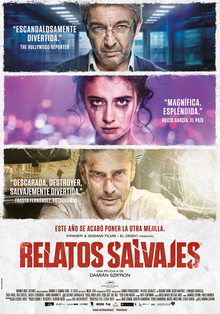Year: 2015
Director: Peyton
Reed
Writer: Edgar
Wright, Joe Cornish, Adam McKay, Paul Rudd
Stars: Paul Rudd,
Evangeline Lilly, Michael Douglas, Corey Stoll, Michael Peña,
With a warm
heart, lots of funny moments and inventive action sequences that take full advantage
of the weird superhero powers, “Ant-Man” is one of the more contained Marvel
movies and easily one of the best MCU titles.
Granted, if “Ant-Man”
was completed by Edgar Wright, it might have been a much more distinctive film,
but it’s surprising how well it turned out after all the tribulations in production.
The main characters are well rounded, although the villain (despite Corey Stoll
doing a great job) could have been a bit better developed.
Still, Peyton
Reed provided us with a solid story that although being quite wacky has the family
theme in its core, particularly the relationship between fathers and daughters,
and sons. Most importantly, the film consistently sticks to it. The screenwriters
of “Ant-Man” are presenting us to complex characters with believable
relationships. Even the standard setup of the hero, trying to win back the
acceptance of his family, has some small twists and surprises. And Scott Lang’s
daughter isn’t just a plot device, she actually has some of the coolest lines and
was really adorable. The other daughter in the story, Hope, is probably the
best female character Marvel has introduced so far. Some actually think that
she was the secret hero of the movie. She’s a strong character, arguably
stronger than Scott, but also complex and emotional. And in contrast to Black
Widow – not sexualized. So, needless to say, Evangeline Lilly’s performance was
completely befitting.
A pleasant surprise
is the big presence of Michael Douglas’ character in the movie and it’s visible
that he put passion and effort in his portrayal of Dr.
Hank Pym. He and Evangeline Lilly have great and sometimes emotional
scenes together, which sufficiently help us understand their motivations,
weaknesses and desires. Thus, the main focus of the movie is actually the
importance of the relationship between parents and kids.
“Ant-man’’
is one of the funniest Marvel movies. A few jokes didn’t exactly work for me,
but there are a few laugh-out-loud moments as well. Of course, Paul Rudd
handles the comedy well and thankfully, he fills in the superhero shoes just as
well. He clearly has enough charisma to be a leading man in the crazy Marvel
Universe.
What I find to be the best utilized aspect of the film is
the actual shrinking technology and the creative ways, in which it’s used to
get the characters out of various situations. It is really something fresh that
we haven’t seen and Marvel made it look really cool on the big screen. With great
macro-photography with real ants shot for reference (they even had ant wrangler
on set), the shrinking scenes can actually make you dizzy, putting you right
there with Scott and the ants, where you can feel the epic scale of the surroundings.
Speaking of ants, they manage to be rather adorable characters, too.
The macro-photography is a technique often used for bug
documentaries and here it’s combined with motion capture, which inserts the
actors into these magnified real-life environments. Of course, they use some
CGI and there’s a wonderful sequence toward the end that delves deeper (literally)
into the science behind the costume and represents some theories in Physics
quite excitingly.
The tie-ins to the other Marvel movies were also surprising,
because they felt better explained and organic, unlike what we saw in “Avengers:
Age of Ultron”. And the end-credit sequences were not just cool glimpses in the
future, but actually provided some essential information.
The movie has 7,9 on IMDB - http://www.imdb.com/title/tt0478970/?ref_=fn_al_tt_1
8,1 from users and 64 from critics on MetaCritic - http://www.metacritic.com/movie/ant-man
95% on RottenTomatoes -
http://www.rottentomatoes.com/m/antman/






.jpg)











